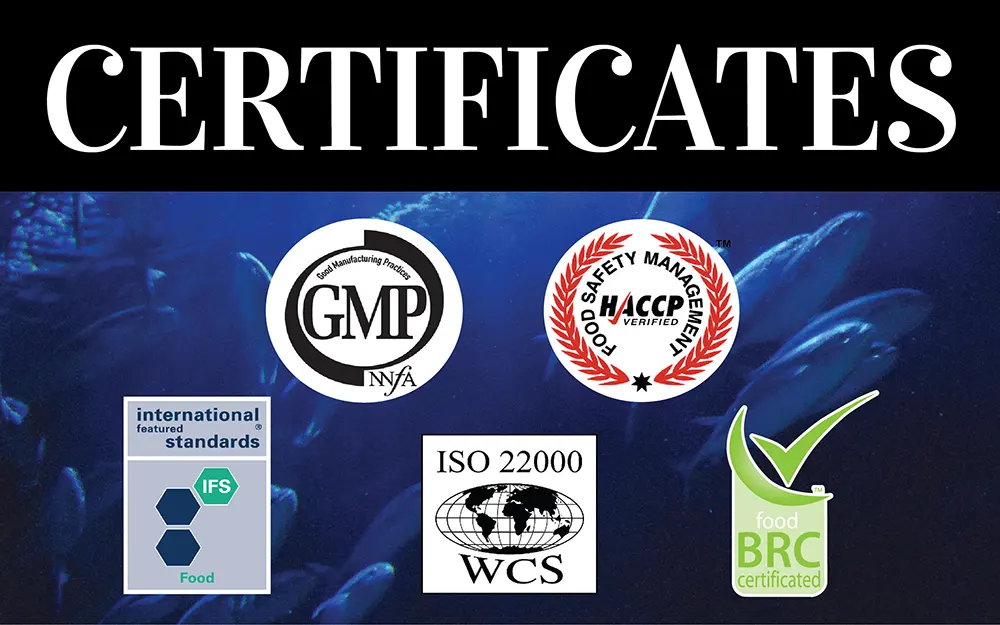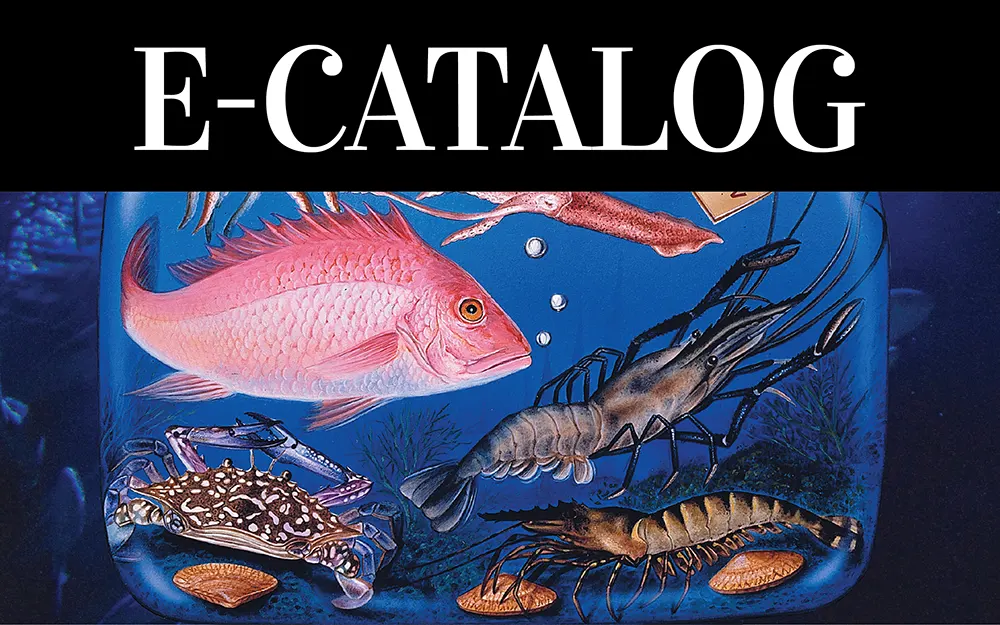
Global shrimp demand, prices ‘could take several years to recover’ from COVID: Undercurrentnews

Dan Gibson: UnderCurrentNews
The global coronavirus pandemic has likely changed the shrimp industry permanently, according to a consensus of sector veterans and market experts in Ecuador, India, the US, Europe and Southeast Asia, speaking at a pair of webinars over the past week.
“We had a global collapse within a very short period of time,” said Jim Gulkin, general manager of Thai-based seafood trader Siam Canadian, speaking as part of an Infofish industry update on May 15. “It’s not a slow market decline or even a rapid market shock, but a completely unprecedented event that shut everything down instantly.”
The shrimp industry, which was already poised on a very delicate supplydemand balance in which farmers could largely make ends meet, has now seen sharp price declines in most key producing regions around the globe, as first Chinese then US foodservice sectors were hit heavily by national lockdowns.
More so than many seafood species, the shrimp industry generates a substantial chunk of its annual earnings from foodservice, a side of demand that has largely disappeared in both the US and the EU almost overnight.
The situation has created, as Gulkin put it, “an enormous void in sales” that is going to take a very long time to recover from.
“That’s not going to be six months or a year, that’s going to be several years before we get back to where we were,” he said.
Speaking at a May 20 webinar hosted by the US Soybean Export Council, Rabobank analyst Gorjan Nikolik had a similarly bearish outlook for the shrimp sector.
“Presenting at last year’s GOAL [Global Outlook for Aquaculture Leadership] conference in India, there was a lot of optimism: Back then people were saying India could grow by 7%, Ecuador by 9%, Vietnam by 13%,” Nikolik said.
A couple of months later, at the Global Seafood Market Conference held in Orlando, in the US state of Florida, “there was optimism, [growth forecasts of] 10-16% for the major producers, with only Indonesia in negative territory”, he said. “So the sector was gearing up for big supply, and it doesn’t look good when that’s the case and suddenly demand disappears.”


Although the supply side has already begun to make signs of recovery, Nikolik said, it will be a long time before demand gets back to anything like it was in the past.
Referring to a survey conducted in the US last month by Civic Science (below), Nikolik noted that 41% of respondents said it would be one-to-five months before they would consider returning to restaurants again.

“That’s concerning, and it means we’re going to have a severely depressed demand curve for the rest of this year,” Nikolik said.
“Which means if supply from the shrimp side is anywhere close to what we had last year, we will still have a low price,” he said. “Some speculation in the market is that perhaps the supply will be reacting so much to the current low point that at some point they will need to have a shortage. This is certainly a very unsettled market, and they’re going into uncharted territory.”
Indian overproduction a risk
In India, the situation is steadily returning to normal after an immediate spell of panic harvesting from farmers leading up to the lockdown of March 22.
“The social obligation has really affected each and every aspect of farming; the main season was in the month of March, all the hatcheries [in Andhra Pradesh] with 68,000 broodstock, were ready for seeding, then suddenly under lockdown 4-5 billion seeds had to be drained because there was no buyer,” said Manoj Sharma, director of shrimp farming company Mayank Aquaculture in Gujarat state, also speaking on the Infofish shrimp webinar.
“Production will be down 50% in the second quarter, but if the lockdown is ended at the end of May I think we will see very good stocking,” he added, echoing the thoughts of Aquaconnect analyst Sudhakar Velayutham, who told Undercurrent earlier this month he expects to see 50-60% of farmers in Andhra Pradesh — India’s shrimp farming hub — stocking in May and June.
“Right now, Andhra has started the stocking — it’s very easy there, there’s 400 hatcheries so the road transportation is very easy for the farmers, so now the airports and cargo facilities have opened up and soon other states in West Bengal and Gujarat will open up too,” Sharma added.
“In June, with the second quarter, I think 70-80% of these farmers will go for the seeding, and we will touch 60-70% of what we were producing last year, close to 500,000 [metric] tons. That’s what I believe as a farmer on the production side.”
Gulkin, however, expressed concern that the demand for 500,000t of Indian shrimp, on top of what is already being produced in Indonesia, Vietnam and Thailand, is not there. As such, production could see the current low prices seen in much of the sector hold for the rest of the year.


“If Indian production reaches 500,000t, there is a risk of overproduction in the market,” Gulkin said. “I don’t see Indonesian production dropping — there was some quick harvesting prior to Ramadan, typically in Indonesia, they clean the ponds out before Eid [al-Fitr, an Islamic holiday], so I think Indonesia will reseed and production there will be pretty normal.”
He noted that in Thailand, farmers were unhappy with the current prices and had been for some time, so production there could drop from 300,000t to 250,000t, or even 200,000t.
Meanwhile, Vietnam has seen raw material prices lift marginally in recent weeks, Gulkin said, as retail is quite a strong component of their sales. Similarly, the market was one of the first with access to a re-opened China, and so the impetus for seeding in the country remained.

“China, of course, produces mainly for its domestic market, but with the situation [improving] there at the moment, there is potential for the production to be at least maintained. So with that being the case, there is a risk of a significant downside for the market.”
“If we do have 70-80% of Indian farmers stocking, we end up with 500,000t and Indonesia somewhat similar, then I think come the end of the year we’re going to have an oversupply situation globally and a very weak market,” Gulkin added. “But if farmers decide to be conservative and hold back, then it could be fairly stable.”

Fatima Ferdouse, a Malaysia-based fisheries consultant for the United Nations’ Food and Agriculture Organization, was of a similar opinion.
“We’ve got to look at the overall production scenario in terms of supply, demand and price,” she said. “If production is going to be almost the same or 20-30% less than last year, it’s going to be a lot compared to the horeca [hotels, restaurants and catering] sector’s shortfall. Even if it recovers by 20% or so there will still be a serious drop, and I don’t know if retail can make up that difference.”

No growth in Ecuador for 2020
The situation on the other side of the Atlantic is little better, according to Jose Antonio Camposano, executive president of Ecuador’s National Chamber of Aquaculture.
The country’s production has been growing steadily by double-digits annually for the past 15 years, he said, but in 2020 they will be fortunate simply to match the export volumes they saw in 2019.
For the first two months of the year, Ecuadorian shrimp export volumes were up by 22%, following the same steady trend seen last year, but for the past two months, with most of the world under lockdown, growth has been flat.
“If you compare the numbers in March and April with those from last year, it’s pretty much the same volume, but when you compare that to the growth we had in the first two months of the year, then you start to see how affected the market was by COVID-19.”

“So you see the market was already affected by the drop not just in China, the US and the EU, but also Ecuador itself was hit by COVID-19; especially Guayaquil and the Guayas province, which accounts for 80% of the total production of the country, and 95% of the total processing capacity,” said Camposano.
Although local processing capacity was sharply reduced at that time,
Camposano said, the factories have now returned to something approaching 80-90% of their normal production. Nevertheless, export data for April shows that there has been little to no growth year-on-year.
“What we predict for the rest of the year is a very slow and painful recovery. Half of our exports are directed to the horeca sector as well as the airlines,” he said. “The market side is pushing Ecuador not to grow, so we’ll probably see Ecuador exporting the same amount of shrimp as 2019, if we are lucky. We are working on recovering the US and EU market, not to the same level as last year but we are hoping to see those return. But still, there’s no space to grow like we have been for the last 10 years.”
Nikolik, speaking at the USSEC seminar, noted that prices in Ecuador fell considerably firstly when the Chinese market went into shutdown, and then again when coronavirus arrived in the US and Europe hot on the heels of the shrimp diverted there from Asia.
“I would say the price is at 50% of what it was, although we’re finally seeing some movement now as the Chinese market comes back. But it’s still been a very difficult situation for exporters.”

On May 20, sources confirmed to Undercurrent that Ecuadorian shrimp prices have begun to rapidly rise once again following the recovery in the Chinese and EU markets, which together account for more than 80% of the country’s exports.
“Four weeks ago, HOSO [head-on, shell-on] 30-40 count shrimp was sold for about $3.40 per kilogram. Now the same size is being sold for about $4.60/kg and it seems it will most likely hit a price of $5.00/kg very soon. I assume the same will happen with HLSO [headless, shell-on] shrimp,” a source with a small Ecuadorian farmer who spoke on condition of anonymity told Undercurrent.
Consumption faces permanent change
The other key challenge faced by the shrimp industry in the year ahead will be finding means to grow the void in demand left behind by the foodservice sector, as well as providing competitive protein for markets going through significant economic downturns.
According to Gulkin, current shifts during the pandemic toward retail, and especially e-commerce channels are likely to become permanent changes in consumer behavior, raising new issues.
“In the US, there’s an enormous chunk of the population that wasn’t comfortable buying online,” he said. “So this was something that was forced on a lot of people, but now they’ve realized how easy it is. And when people are buying frozen seafood online it’s quite easy, quite predictable, but if you’re buying fresh, people want to see it in person.”
Although frozen seafood is already common in most western countries, Gulkin believes the further shift to e-commerce in East Asia is likely to see it become more of a staple there too, where customers are more used to buying from fresh markets.
“Consumption patterns have changed permanently. It was already heading that way, more and more people were buying online and frozen food, this was a curve, but now it’s been a near-vertical increase.”
And in this regard, Southeast Asian markets have very little shrimp available for online sales, according to Ferdouse.
“Finfish yes, but not much shrimp,” she said. “People still love the head-on product, but importantly, consumer packs of frozen shrimp are not really available in this part of the world; and so people are buying less and less shrimp and more finfish and other types of seafood.”
“In the end we will find ourselves with a completely different consumer – with a different way of buying our products, and a different way of consuming them”
And yet, boosting domestic consumption would offer an excellent way out of this predicament for many farmers.
“We have to develop the domestic sector as much as possible wherever it is possible,” she said. “In Southeast Asia it’s definitely there, but per capita, it’s going to depend on consumer’s disposable income, and how much they can spare for buying shrimp.”
India, for example, is a potential bottomless market for shrimp consumption, Sharma added — if even 30% of the population ate two kilos of shrimp per year, it would consume the entire national production.
Meanwhile, regarding shrimp sales to the US, Camposano has noted another obstacle: culture.
“We’ve found trying to explain shrimp to customers in the US, the question they ask is how do you cook it? A lot of consumers like to eat shrimp, but they’re used to having it cooked for them in a restaurant,” he said.
“So you have to adapt your product for a platform, and then you have to adapt it for the needs of that specific consumer so they know how to cook it in the right way.”
Whatever the solution, the shrimp market is likely to have an entirely different appearance in a year or so’s time, he believes.
“We haven’t seen the end of it: COVID has shown us how fragile the market is, and things will change so gradually [during the lockdown] that in the end we will find ourselves with a completely different consumer — with a different way of buying our products, and with a different way of consuming them.”



